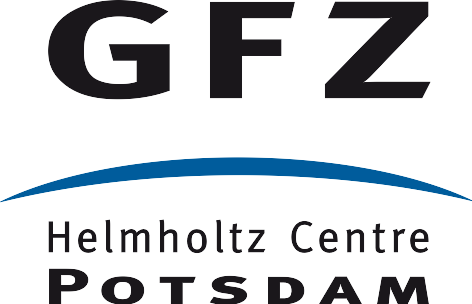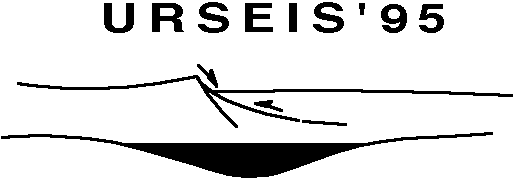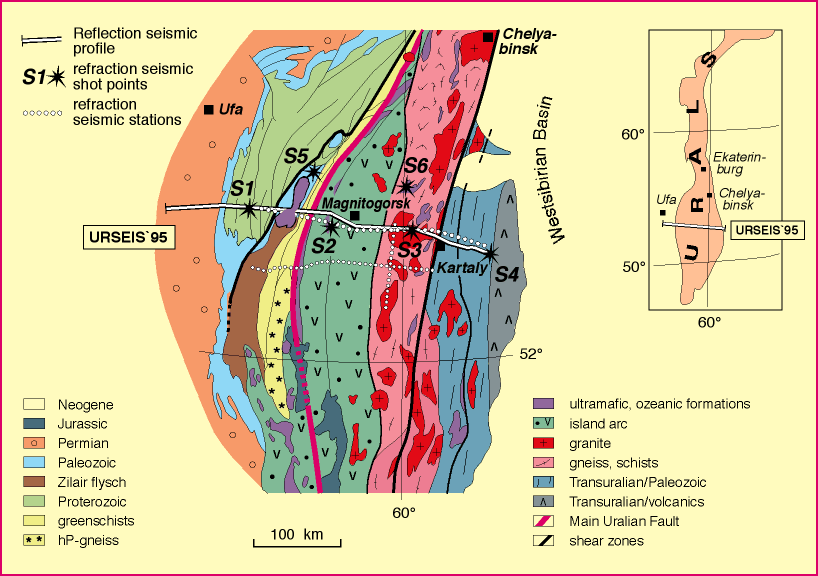The Uralide mountains present a Paleozoic orogen that resulted from the Middle to Late Paleozoic collision of the East European craton with a Sibirian-Kasachian terrane agglomerate. The out- standing feature of the Uralides is the existence of a significant crustal root in a low-relief, little eroded and unextended mountain belt preserved since Early Mesozoic times.
The multiseismic survey URSEIS `95 across the southern Urals aimed
- to reveal the geometry and nature of the crustal root.
- to unravel the internal architecture of the orogen, including the geometry and extent of the Main Uralian Fault and crustal shear zones.
- to test the hypothesis of a genetic relation between crustal reequilibration and reflective lower crust.
- to image orogenic signatures in the upper mantle.
- to correlate near-surface geology and deep structures.
- to scrutinize the geodynamic evolution of the Uralides.
The project integrated moreover gravity and petrophysical modelling, as well as geological investigations.




